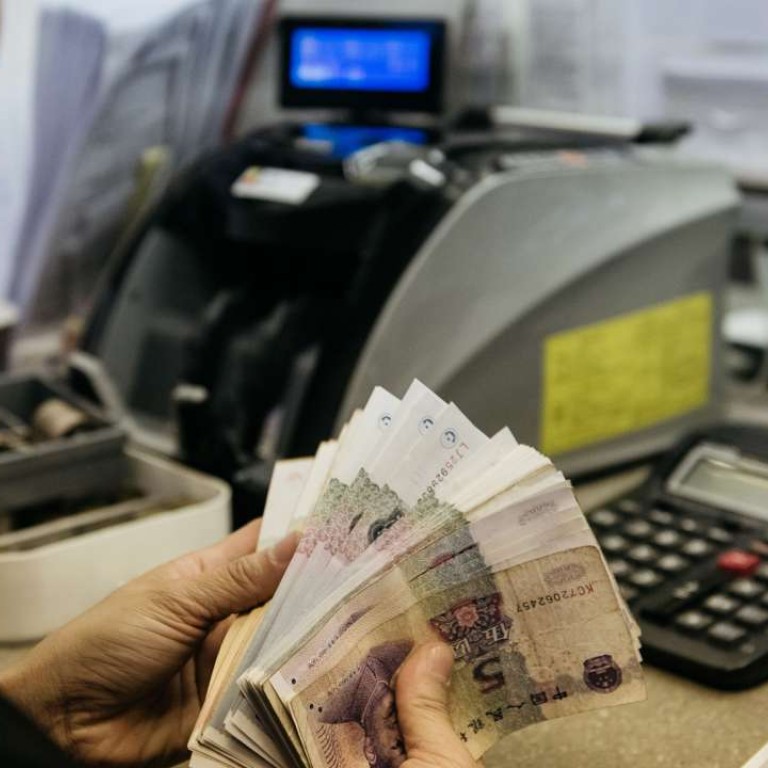
New | McKinsey warns of China’s ‘looming interest rate storm’ as capital flight pressures ease
China’s net foreign-exchange sales fall 67 per cent to US$40.9 billion, but McKinsey warns Fed rate rises could trigger a liquidity crisis
China’s foreign-exchange regulator has claimed an early, albeit cautious, victory in its battle to stem the yuan’s capital flight.
The State Administration of Foreign Exchange said on Thursday that the country had “remarkably improved its ability” to cope with interest rate rises brought on by the US Federal Reserve.
But consultancy company McKinsey warned that banks would be exposed to higher risks as China raised rates to accommodate increases in the US.
Chinese commercial banks sold a net US$40.9 billion of foreign currencies in the first quarter, a 67.2 per cent drop from the same period in 2016, according to data from the regulator. Bank deposits denominated in foreign currencies rose by US$300 million, a slower pace than the US$11.2 billion increase a year earlier.
The data indicated declining demand to convert yuan into hard currencies amid easing expectations of the Chinese currency’s depreciation, the regulator’s spokeswoman Wang Chunying said at a press briefing in Beijing on Thursday.
That is vindication for the agency’s draconian measures since last year to choke off capital flight and stem the yuan’s 7 per cent decline.
“China is more comfortable with the current stability, given that the market is already well prepared for the Fed rate increases, while the US dollar had been much weaker than expected so far,” said Zhou Hao, an economist at Commerzbank in Singapore.
“The US and China seem to be comfortable with the present currency dynamics as the focus for both economies is on the Korean peninsula. So this sort of stability will likely persist for a while before new surprises kick in.”
However, some analysts say the impact from US rate increases should never be underestimated, particularly for China’s banking industry.
McKinsey warned of “a looming interest rate storm” for Chinese banks in a report on Wednesday. The logic is that China is “very likely” to have entered a rate-increase cycle to better cope with the rises in the US.
The jump in borrowing rates could catch ill-prepared Chinese banks off guard, bursting asset bubbles and triggering a liquidity crisis.
“Chinese banks have never seen a financial crisis induced by interest rate risks. The US savings and loan crisis of the 1980s and the ‘great bond massacre’ in 1994 illustrated how destructive an interest-rate-induced crisis could be,” said Eric Kuo, leader at the McKinsey China implementation centre and one of the authors of the report.
From Dalian Wanda Group’s US$1 billion acquisition of Dick Clark Productions to Country Garden Holdings’ sales of villas in Malaysia to Chinese pensioners, a raft of China’s overseas trade, investments and acquisitions have been caught by the country’s currency dragnet.
As outflow pressures eased since the first quarter, China last week scrapped the restriction on cross-border yuan payments imposed in early January, banking sources told the South China Morning Post.
Aidan Yao, senior emerging Asia economist at AXA Investment Managers in Hong Kong, said both internal and external factors were contributing to the recent stability of the yuan, which led to a gradual relaxation of capital controls.
“The economy has got off to a flying start in 2017, firing on all cylinders,” he said. “The momentum and the authority’s capital controls have worked pretty effectively over the past few months.”
For its part, “China will continue to push for the opening of the capital account in a prudential and orderly manner”, Wang said, reiterating the regulator’s stance.


